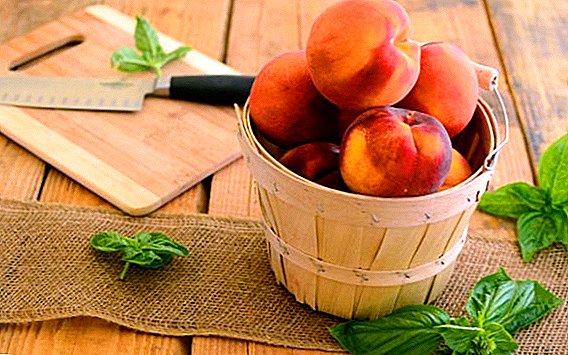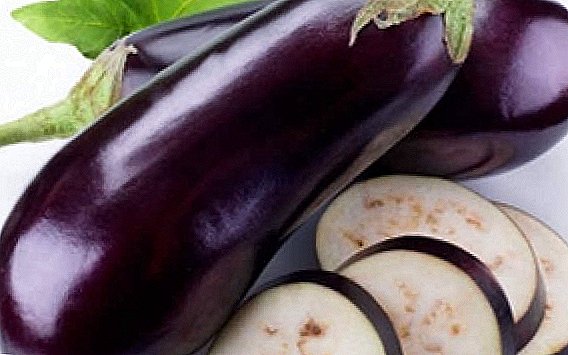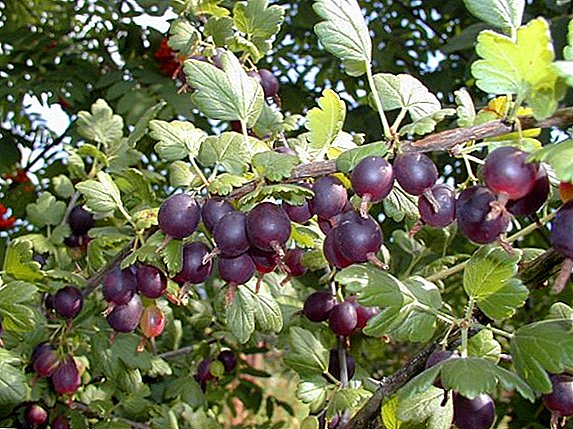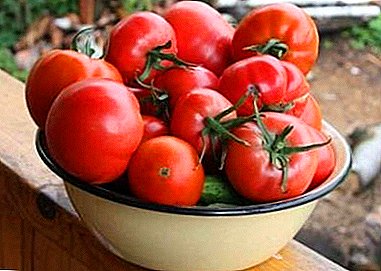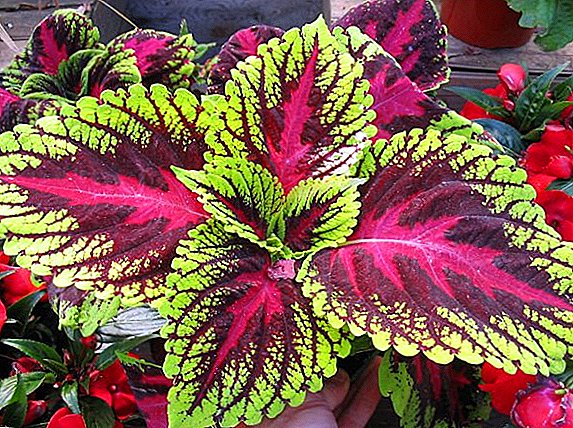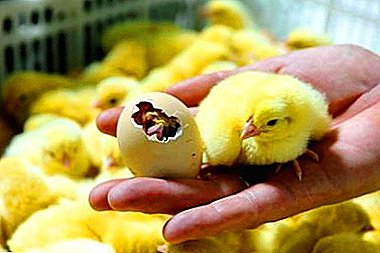
In artificial breeding of chickens, in order to obtain results, it is necessary to adhere to the technology of incubation of eggs.
For hatching, one of the important factors is the observance of the correct parameters affecting the formation of embryos. Next we look at the importance of keeping the temperature.
Why is important?
The temperature in the incubator is the main criterion for hatching healthy chicks. The conclusion of a full livestock - is the result of hard work that requires constant monitoring of indicators in the incubator cabinet for the entire time.
Note! Maintaining the right temperature is important for creating conditions close to natural. At each stage of the formation of the embryo, it is different.
You can learn more about the mode of incubation of chicken eggs in different periods, as well as see the tables of the optimal temperature, humidity and other factors by day here.
The necessary conditions
Before you start laying eggs, you must perform the following steps:
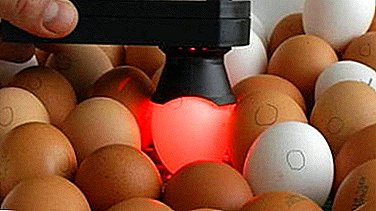 eggs suitable for incubation are up to 7 days old;
eggs suitable for incubation are up to 7 days old;- All eggs pass primary selection - they fit the tab with a flat shell, without deformations, cracks, chips, growths and contamination - there is a risk of bacteria penetrating into the egg (you can learn more about the rules for selecting and testing material for offspring here);
- Fresh eggs are collected in a box of sawdust and stored at a temperature not higher than 18 degrees in a vertical position with a pointed end down (for information on how to store chicken eggs correctly, read this article);
- Before laying, eggs are heated to 23–25 degrees and each is translucent with an ovoscope to determine fertilized ones.
There are several temperature characteristics:
- Embryo temperature - if the ambient temperature falls below the necessary physiological norm, the development of the embryo stops or stops completely (its death occurs).
- Eggshell temperature (37 - 38 degrees). This is important because at an early stage of development, the embryo floats on the surface of the egg, close to the shell.
- Incubator temperature.
Stages of artificial breeding
Incubation of eggs begins from the moment of laying. The laying time does not matter, but experienced poultry farmers advise laying eggs in the evening, so that the chicks hatch in the morning. Before placing the eggs in the incubator, they are transferred to a warm room.
You need to select eggs of the same size so that the chicks hatch in one day. Of the large eggs, chickens hatch later, so they are placed first, after 6 hours of medium size, and the last after the same time interval are small.
Incubation is divided into 4 stages:
- the first period lasts 7 days;
- the second period is from 8-11 day;
- the third period starts from the 12th day and lasts until the first peep of non-hatched chickens;
- the fourth stage ends with the hatching of young stock.
What indicators should be in the incubator?
| Period | Terms ovoskopirovaniya | Humidity | Temperature | Turn |
| 1 | after 6 days | Not less than 50% up to 18 days | On dry - 37.6 ° С On wet - 29 ° С | every hour |
| 2 | after 11 days | |||
| 3 | after 18 days | |||
| 4 | - | gradually bring to 78-80% | On dry - 37.2 ° С On wet - 31 ° С | not needed |
What to do?
After the eggs reach a temperature of 25 degrees, they are laid in an incubator.
- The first 18 days the temperature is set to 38 degrees, with a humidity of 50%. Every hour the eggs are rotated (the chicken turns them over with such frequency). Conveniently, when the incubator has the function of automatic egg turning.Reference! These manipulations are carried out to ensure that the embryo does not stick to the wall of the shell. At the end of this period, the development of the circulatory system and the size of the yolk are carefully checked with an otoscope. Not fertilized eggs clean.
- For the second period, it is important to respect the humidity, because dry air can kill the growing germ.
 From the third period, the incubator begins to be aired, at this stage a more active metabolism occurs and an increased gas exchange occurs, which can raise the overall temperature inside the incubator.
From the third period, the incubator begins to be aired, at this stage a more active metabolism occurs and an increased gas exchange occurs, which can raise the overall temperature inside the incubator.Airing it down to the norm. Conduct ovoskopii - will be visible embryo chicken, occupying 2/3 of the volume of the egg.
- From the fourth period, the temperature is kept at the level of 37.2 degrees, the humidity indicators raise to 80%. Ventilation is carried out twice a day. Squeak of future chickens speaks of a positive result.
The reasons for the differences of parameters
Due to the fact that different stages of development take place inside the fertilized egg, the temperature in the incubator is set on the basis of physiological needs for each period.
- In the first period, all organs and systems are laid down in the embryo, for the proper formation of which temperatures up to 38 degrees are necessary.
- In the second period, the future chick has a formation of a skeleton, beak. The optimal temperature indicators are 37, 6-37, 8 degrees.
- In the third period of development, the chicken is covered with down, the temperature regime is lowered to 37, 2-37, 5 degrees.
- In the last stage, the temperature is lowered a little more, to 37 degrees, but they increase humidity and ventilation.
Consequences of non-compliance
The temperature graph should be traced throughout the incubation. In case of violation of temperature conditions The following unfavorable nuances may occur:
- With a long increase in performance, the embryo is accelerated. When hatching, all chicks will be small in size and not viable, due to not overgrown umbilical cord.
- With a decrease in temperature indicators, inhibition of embryo formation and consumption of nutrients occurs. The incubation period is extended, the chicks may die, or will not hatch during the time, the young will be weakened.
- Deviations of the temperature schedule are more dangerous in the first week of incubation. Strong deviations of temperature indicators are fraught with the death of the entire incubation material. Temperature regulation is carried out by frequent airing of the setter.
Conclusion
Chick breeding is a common practice in both small farms and large industrial farms. Only with proper selection of eggs and compliance with the schedule for important indicators, after 3 weeks, viable strong chicks will hatch.


 eggs suitable for incubation are up to 7 days old;
eggs suitable for incubation are up to 7 days old; From the third period, the incubator begins to be aired, at this stage a more active metabolism occurs and an increased gas exchange occurs, which can raise the overall temperature inside the incubator.
From the third period, the incubator begins to be aired, at this stage a more active metabolism occurs and an increased gas exchange occurs, which can raise the overall temperature inside the incubator.